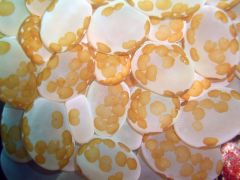![]()
![]()
![]()
Use LEFT and RIGHT arrow keys to navigate between flashcards;
Use UP and DOWN arrow keys to flip the card;
H to show hint;
A reads text to speech;
21 Cards in this Set
- Front
- Back

What is this an image of? |
Acoelomorpha |
|

What is this an image of? |
Platyhelminthes |
|
|
Acoelomorpha and Platyhelminthes have ____________ bodies. |
triploblastic |
|
|
What are general characteristics of Acoelomorpha? |
|
|
|
How do Acoelomorpha asexually reproduce? |
Fragmentation |
|
|
How do Acoelomorpha sexually reproduce? |
Hermaphrodites + larvae |
|
|
What are 2 general characteristics of Platyhelminthes? |
|
|
|
What is the osmoregulatory system and where is it most common? |
it controls the water balance in animals and is most common in freshwater animals to adjust concentration gradients between internal and external fluids |
|
|
What is Protonepheridium? |
Primitive osmoregulatory and |
|
|
The asexual reproduction for free-living fresh and saltwater flatworms is a process called: |
fission |
|
|
Asexual reproduciton for parasitic flatworms is called: |
budding |
|
|
In sexual reproduction, free-living fresh water flatworms embryos emerge as _________. |
juveniles |
|
|
In sexual reproduction, free-living marine water flatworm embryos develop into __________ __________. |
Mullers larva |
|
|
In parasitic forms, there are several larva stages possible depending on the species. (T/F) |
T |
|
|
What are 2 characteristics of the Class Tubellaria |
|
|
|
What are the Class Trematoda? |
parasitic flukes |
|
|
What is the first and final host of the class Trematoda? |
first: molusk final: vertebrate |
|
|
What are 3 of the class trematoda's adaptations to parasitism? |
|
|
|
What are 3 characteristics of the Class Monogenea? |
|
|
|
What are 3 characteristics of the class Cestoda? |
|
|
|
What class does the Tape Worm belong to? |
The class Cestoda |

